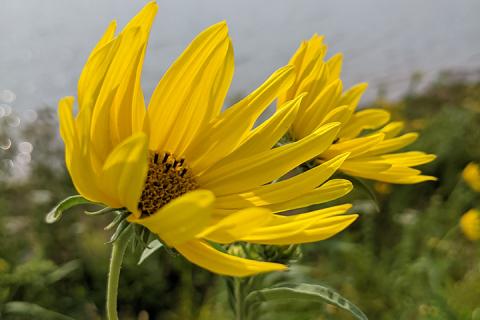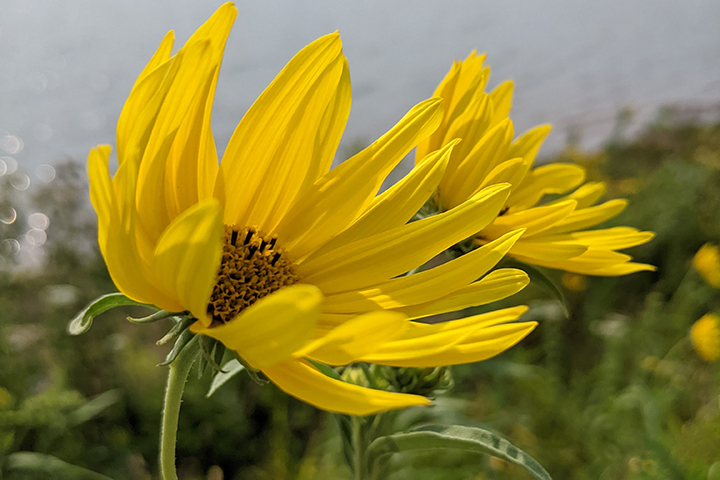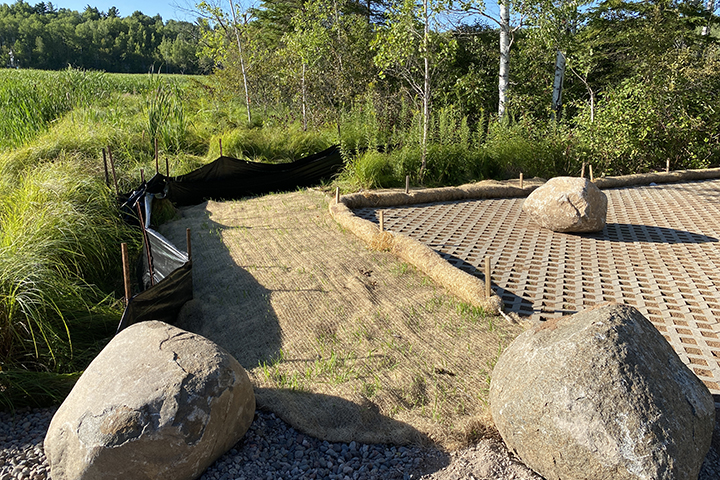
This project brought together a diverse team of knowledge-holders, caretakers and outreach professionals to develop a shoreline planting resource called Ganawenindiwag: Working with plant relatives to heal and protect Gichigami shorelines.
The project
The plants that grow along Gichigami (Lake Superior) shorelines sustain life and help hold the earth together, but are threatened by climate change impacts, human development, and resource extraction. The knowledge and practices of Ojibwe land stewards have protected and supported northern Wisconsin coastal landscapes for thousands of years. As current land and water caretakers increasingly look for erosion management alternatives to armoring at the shoreline, the project team identified an opportunity to provide appropriate teachings and background so that all coastal caretakers can support access to foods and medicines that underscore tribal sovereignty and the important resurgence of Anishinaabe language, culture, and lifeways.
This project began as an idea to develop a culturally informed guidance resource that would empower users to grow and preserve plants along Wisconsin’s Gichigami shores, supporting many elements of human well-being. The final product, Ganawenindiwag (“they take care of each other” in Ojibwe), introduces readers to 97 plant beings with photos and iconography sharing known cultural relationships, and text that describes environmental preferences and bank stabilization potential. The resource is infused with a rich narrative that highlights Ojibwe land stewardship and includes tips on planning and caring for shoreline planting projects. The project drew from existing research, knowledge held within the core project team, and guidance from its cultural advisory group to respectfully and appropriately curate information about plant beings and organize it in a meaningful way for coastal caretakers to use when thinking about restorative practice in shoreline landscapes.
The impact
- Hundreds of print copies of Ganawenindiwag have been distributed at meetings and conferences and directly requested from the Reserve and GLIFWC. Within the first eight months since publication, several project partners shared that they had referenced the resource in their own work on areas such as the Michele Wheeler wetlands on Lake Superior's south shore and Wisconsin Point and, to date, Ganawenindiwag has been written into two restoration-focused project proposals in the region.
- Ganawenindiwag has inspired plant restoration efforts in Gichigami coastal areas as a resource that originates from and resonates with the needs of local shoreline environments and local communities.
- The integrated knowledge approach enables shoreline restoration that supports cultural lifeways and strengthens and affirms connection to place. For example, the iconography approach to cultural information sharing demonstrates a process for developing resources that is respectful and attentive to Ojibwe cultural identity and practice. Other valuable insights and lessons that emerged from this project can be found in the case study “Adjusting to Respect Different Ways of Knowing.”

